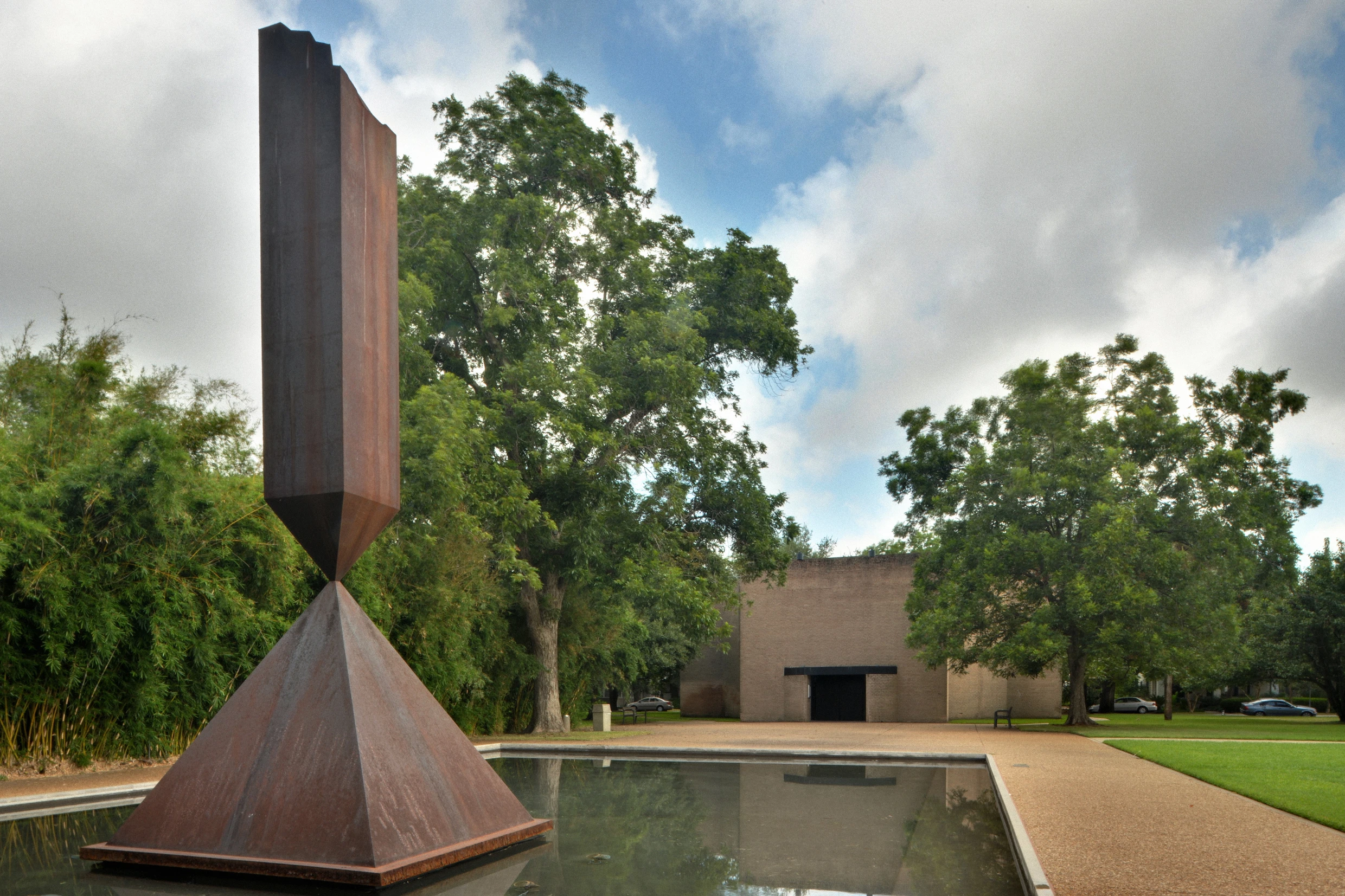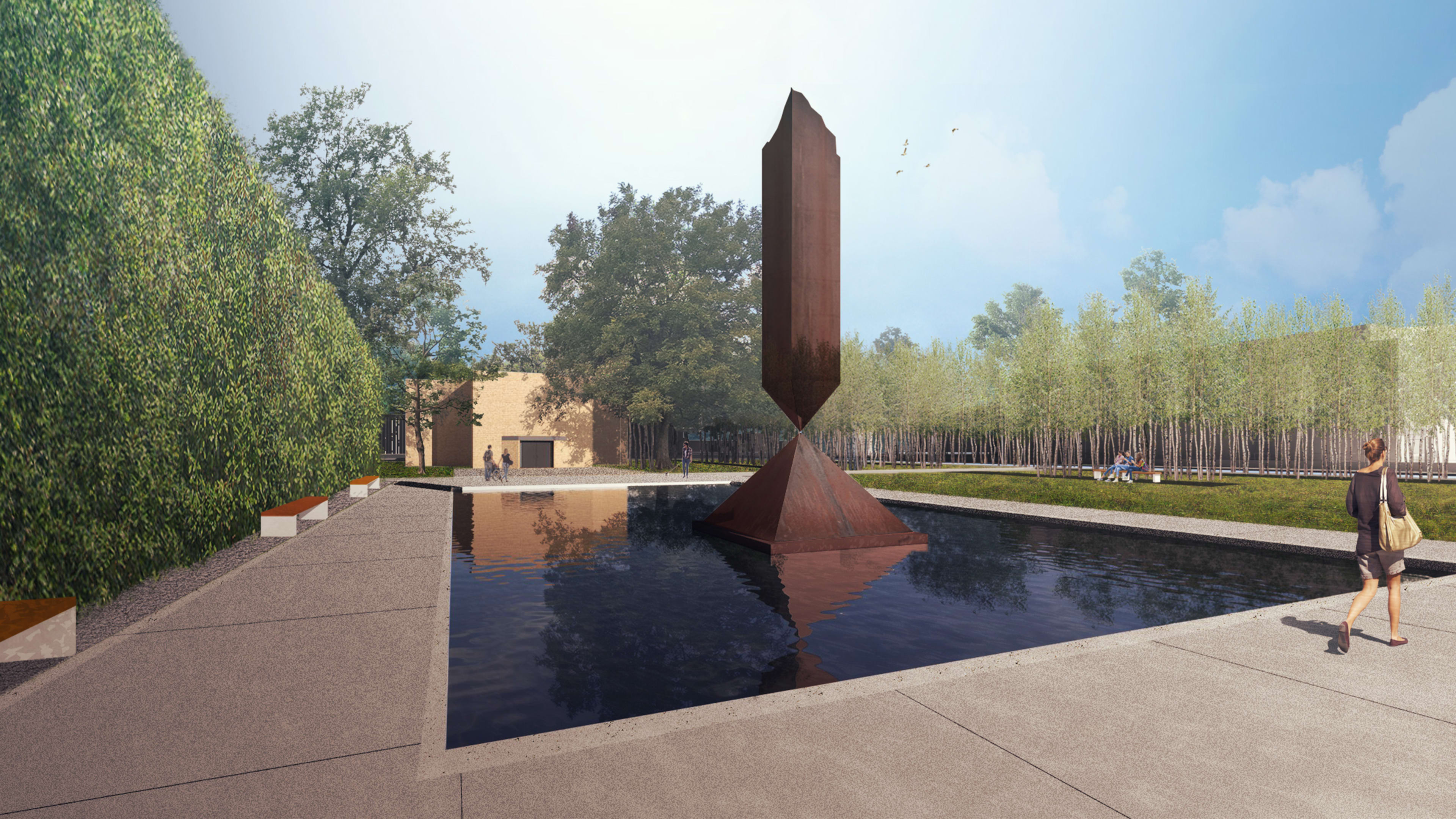In March 2019, Houston’s iconic, nondenominational Rothko Chapel was closed indefinitely for renovations. The skylight-adorned sanctuary, which was commissioned by art collectors John and Dominique de Menil in 1964 and dedicated in 1971, doubles as a place of worship and a work of modern art; the octagonal brick building is lined with 14 color-blocked Mark Rothko paintings, ranging from deep nightshades to black. In June, the popular worship center will reopen after undergoing a $30 million update.

This project, known as Opening Spaces, was designed by New York-based firm Architecture Research Office, which will lead restoration of the Chapel (the structure hasn’t been renovated since 1999) and also expand the Houston mecca’s one-acre campus. In the late 1960s, Rothko and Philip Johnson, his architect collaborator, often clashed over a design vision for the Chapel; after several revisions, and with the help of two subsequent architects, the Chapel was finally completed in 1971, a year after Rothko’s death. Opening Spaces seeks to return the structure and the surrounding grounds to its earliest iteration, as intended by Rothko and Johnson.

In an effort to achieve this, Architecture Research Office worked with lighting design firm George Sexton Associates to replace the Chapel’s central skylight, designed to illuminate Rothko’s brooding canvases. The lights in the entryway have been returned to their former glory as well, so that they conceptually honor the way Rothko wanted his work to be received.

The Chapel’s central goal is to serve as a place for interfaith worship (a nod to Houston’s notably diverse population), community engagement, and social justice. The redesign team zeroed in on this ethos by removing all miscellany from the grounds, save one sculpture, Broken Obelisk, created by Barnett Newman. The art piece—a crystal-shaped totem that teeters on a pyramid form, emerging from a reflecting pool below—was dedicated to Martin Luther King Jr. in 1971 and serves as a reminder of the Chapel’s primary interest in human rights. In fact, the reopening in June is marked by an event celebrating the Rothko Chapel’s Óscar Romero Award, a biennial award recognizing human rights advocacy; this year, the award will focus on climate justice, which is fitting considering the amount of flooding Houston experienced during Hurricane Harvey, and Texas’s involvement with the oil industry.
Structurally, the Chapel’s walls have been fortified with steel reinforcements in order to guard against Mother Nature’s whims; Nelson Byrd Woltz Landscape Architects has redesigned the plot of land to be more green and walkable for visitors. Unsurprisingly, the Chapel needed updates to some of its infrastructure with regard to sustainability, so a new “Energy House” will relocate the mechanical and control systems from its former subterranean location to an above-ground facility with a backup chiller and generator.
Listed on the National Register of Historic Places, the Chapel has enjoyed some 55,000 visitors each year. Christopher Rothko, Opening Spaces chairman and the artist’s son, said in a statement: “The Chapel was built with a vision that brought together modern art and a sacred space to promote human unity, solidarity, justice and peace. The universality of this vision is very relevant for us today and I believe will remain so for generations to come.”
Recognize your brand’s excellence by applying to this year’s Brands That Matter Awards before the early-rate deadline, May 3.




